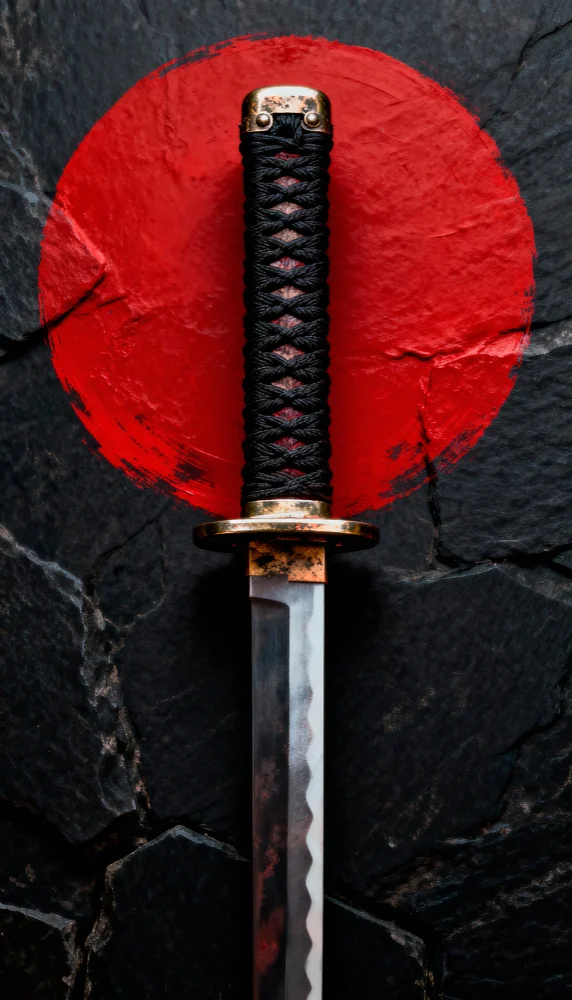The Sharpest Non-Brittle Sword in the UK: A Complete Guide
For centuries, swords have captivated the imagination of warriors, collectors, and martial arts enthusiasts alike. These masterfully forged weapons represent the pinnacle of metallurgical artistry, where razor-sharp edges meet unwavering durability. Among all blade designs, the katana stands as perhaps the most celebrated example of this delicate balance—a sword that achieves legendary sharpness without sacrificing structural integrity.
But what makes a sword truly sharp yet resilient? And more importantly for UK enthusiasts, which blades available today can claim this coveted title? The answer lies in understanding the intricate relationship between steel composition, forging techniques, and heat treatment processes that transform raw metal into legendary weapons.
This comprehensive guide explores the science behind sword sharpness and brittleness, examines the katana’s unique advantages, and provides practical recommendations for UK-based collectors and martial arts practitioners seeking the ultimate balance of cutting performance and durability.
Understanding Sharpness and Brittleness in Sword Design
The pursuit of the perfect blade edge involves mastering complex metallurgical principles that have challenged swordsmiths for millennia. Sharpness depends primarily on three critical factors: edge geometry, material properties, and heat treatment precision.
Edge geometry determines how efficiently a blade cuts through materials. A thinner edge angle typically produces superior sharpness, but this advantage comes at the cost of structural weakness. The most effective sword designs achieve optimal cutting performance through carefully calculated edge profiles that maximize sharpness while maintaining adequate steel thickness for durability.
Material properties play an equally crucial role in blade performance. High-carbon steels can achieve exceptional hardness levels, creating edges that maintain their sharpness through extended use. However, excessive hardness leads to brittleness—the tendency for steel to crack or shatter under stress rather than bend or deform.
Heat treatment processes represent the final piece of this metallurgical puzzle. Through precise temperature control during heating, quenching, and tempering cycles, skilled swordsmiths can manipulate steel’s crystalline structure to achieve the perfect balance between hardness and toughness. This delicate process separates exceptional blades from ordinary ones.
The Katana: Engineering Excellence in Steel
The KATANA UK emerges as a prime candidate for the sharpest non-brittle sword available in the UK, thanks to revolutionary forging techniques developed over centuries of Japanese craftsmanship. This curved masterpiece demonstrates how traditional methods can surpass modern manufacturing in creating superior blade performance.
Traditional katana construction begins with tamahagane steel, produced through a labor-intensive smelting process that creates steel with varying carbon content throughout the material. Master swordsmiths carefully select and combine different steel grades, folding the metal hundreds of times to eliminate impurities and create homogeneous carbon distribution.
The differential hardening process, known as yaki-ire, represents perhaps the most ingenious aspect of katana construction. By applying clay mixtures of varying thickness along the blade before heat treatment, swordsmiths create different cooling rates across the steel. The exposed edge cools rapidly, achieving maximum hardness for exceptional sharpness. Meanwhile, the clay-covered spine cools more slowly, retaining flexibility and toughness.
This technique produces the distinctive hamon—the visible temper line that separates the hard edge from the softer spine. The result is a blade with a razor-sharp cutting edge supported by a flexible backbone that resists breaking under stress, making it an ideal candidate for those seeking the sharpest sword that won’t become brittle.
Legal Considerations for Sword Ownership in the UK
UK sword laws present specific regulations that collectors and martial arts practitioners must understand before acquiring any blade. The Criminal Justice Act 1988 prohibits the sale of certain sword types, but provides important exceptions for collectors, martial artists, and historical enthusiasts.
Curved swords over 50 centimeters in length, including traditional katanas, require specific justification for purchase and ownership. Acceptable reasons include membership in recognized martial arts organizations, historical collecting purposes, or theatrical and educational uses. Reputable UK retailers verify customer eligibility before completing sales.
Storage requirements mandate secure keeping of swords to prevent unauthorized access. Public carry remains strictly prohibited except for legitimate transport to martial arts training, exhibitions, or other authorized activities. These regulations balance public safety concerns with legitimate collecting and training interests.
Understanding these legal frameworks ensures responsible ownership while supporting the continued availability of authentic Japanese swords for UK enthusiasts. Staying informed about potential legislative changes helps maintain compliance with evolving regulations.
Top Katana Recommendations for UK Collectors
Several exceptional katana models available through UK retailers demonstrate superior sharpness without brittleness concerns. These recommendations balance authentic construction methods with practical availability for serious collectors and practitioners.
The Hanwei Practical Katana series offers outstanding value for martial arts training and cutting practice. Constructed with 5160 spring steel and differential hardening, these blades achieve excellent sharpness while maintaining flexibility for extended use. The visible hamon and traditional construction make them ideal for understanding authentic katana characteristics.
For collectors seeking museum-quality pieces, the Citadel Swords Workshop produces handforged katanas using traditional techniques. Each blade undergoes extensive folding, clay tempering, and hand polishing to create authentic museum-quality pieces. The combination of T10 tool steel and traditional construction methods produces exceptional sharpness with historical accuracy.
Paul Chen’s Bushido series represents the pinnacle of production katanas available in the UK. These blades feature hand-forged construction, authentic differential hardening, and meticulous attention to traditional details. The superior metallurgy and heat treatment create blades capable of exceptional cutting performance while maintaining structural integrity.
Comparing the Katana to Alternative Sword Designs
While the katana excels in balancing sharpness and durability, comparing it to other historical sword designs reveals the unique advantages of Japanese metallurgy and construction techniques.
European longswords emphasize thrusting ability and versatility in armored combat. Their broader, straighter blades distribute stress more evenly but typically cannot achieve the extreme sharpness of properly constructed katanas. The different fighting styles and armor considerations led to design priorities that favored durability over ultimate cutting performance.
Roman gladii prioritized reliability and ease of manufacturing for large-scale military production. While effective for their intended purposes, these shorter blades lack the sophisticated metallurgy and heat treatment techniques that make katanas exceptional. The focus on battlefield practicality over individual blade perfection represents a different approach to weapon design.
Curved sabers share some characteristics with katanas but typically employ simpler construction methods. While effective cutting weapons, most sabers lack the differential hardening and sophisticated metallurgy that gives katanas their unique combination of sharpness and resilience.
The katana’s curved design, differential hardening, and centuries of metallurgical refinement create advantages that remain unmatched by other sword types available in the UK market.
Essential Maintenance and Safety Practices
Proper maintenance ensures that sharp, non-brittle swords retain their performance characteristics while preventing accidents during handling and storage. These practices apply especially to high-performance blades like authentic katanas.
Regular cleaning removes moisture, fingerprints, and environmental contaminants that can cause corrosion. Use appropriate cleaning solutions designed for high-carbon steel, avoiding harsh chemicals that might damage traditional finishes. After cleaning, apply a thin layer of protective oil to prevent rust formation.
Sharpening requires specialized knowledge and equipment to maintain proper edge geometry. Professional sword maintenance services understand the unique requirements of different blade types and can preserve the original heat treatment characteristics. Improper sharpening can destroy the carefully balanced metallurgy that makes quality swords both sharp and durable.
Safety protocols include secure storage away from unauthorized access, proper handling techniques to prevent accidents, and understanding the blade’s capabilities and limitations. Never use authentic swords for inappropriate cutting tasks that might damage the blade or cause injury.
Regular inspection helps identify potential problems before they become serious. Look for chips, cracks, or unusual wear patterns that might indicate maintenance needs or handling issues.
Finding Your Perfect Balance of Sharpness and Strength
The search for the sharpest non-brittle sword in the UK ultimately leads to understanding the remarkable achievements of traditional Japanese swordsmithing. Through centuries of refinement, the katana represents the pinnacle of metallurgical artistry, achieving legendary sharpness while maintaining structural integrity that has captivated warriors and collectors worldwide.
The differential hardening techniques, sophisticated steel selection, and meticulous attention to detail that characterize authentic katana construction create performance advantages that remain unmatched by other sword designs. For UK enthusiasts seeking the ultimate balance of cutting performance and durability, properly constructed katanas from reputable sources offer the ideal solution.
Whether your interest lies in martial arts training, historical collecting, or appreciation for masterful craftsmanship, investing in a quality katana provides access to centuries of metallurgical innovation. The combination of razor-sharp edges and flexible spines creates weapons that perform as beautifully as they appear, embodying the perfect fusion of form and function.
Explore the world of authentic Japanese swords through reputable UK dealers, connect with local martial arts communities, and discover the remarkable heritage these blades represent. Your journey into the art of the sword awaits.

Deepak Sharma
Namaste! I’m Deepak Sharma, the creative mind behind SocialFunda, your go-to hub for Facebook bios, captivating captions, Instagram bios, and a treasure trove of Hindi Shayari. As a digital enthusiast, I am passionate about curating content that adds a touch of flair to your online presence.







